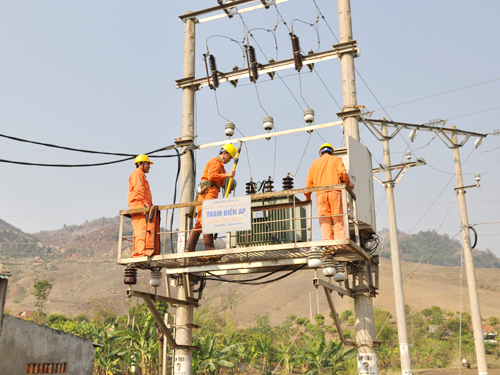Sunday, 14/12/2025 | 08:45 GMT+7
On May 5, 2015 in Hanoi, Deputy Minister of Industry and Trade Hoang Quoc Vuong presided over the meeting to collect feedback and comments on the Draft "Electricity Development Strategy for Vietnam by 2025 and Vision to 2035".
Since 2004, on the basis of the Political Bureau's conclusions relating to the strategy and development plan for electricity sector in Vietnam during 2001-2010, orientation to 2020, the Prime Minister issued Decision No.176/2004/QD-TTg approving Vietnam electricity development strategy during 2004 -2010 and orientation toward 2020.

In evaluation of the first strategy and planning for the power sector, Mr. Hoang Tien Dung, Director of the Institute of Energy, Ministry of Industry and Trade, said the sector basically has achieved most of its objectives, such as power supply, grid expansion, supply to upland and rural areas, and the electricity market. However, there are still some pending issues; for example, it is difficult to mobilize capital; uncertainties are experienced in fuel supply for generation of electricity; some power generation projects lag behind the schedule; the labor productivity of the power sector remains low; the manufacture of electrical equipment has not met the growing demand.
According to calculations by the Institute of Energy, the demand for power development in the phase 2015 - 2026, vision to 2035, reaches a total capacity of 84,500 MW by 2025. Thus, it will be nearly 150,000 MW by 2035, corresponding to the power output of nearly 400-760 billion Kwh. This is one of considerable challenges for Vietnam's power sector.
From the viewpoint of the Deputy Minister, in addition to solutions for organizations and mechanisms, investment, finance, market, and labor productivity improvement, one of the important measures is to increase the efficient use of electricity to generate socio-economic benefits in all other related areas such as electricity in the building, electricity for industrial production, electricity for agriculture, and domestic power supply.
Trong Tan








 Enhancing capacity to develop and implement energy efficiency policies at local level
Enhancing capacity to develop and implement energy efficiency policies at local level
 Bosch Vietnam Plant Benefits from Investment in Energy Efficiency
Bosch Vietnam Plant Benefits from Investment in Energy Efficiency
 Webinar 2: “Financial Support for Energy Efficiency Enterprises – Opportunities and Challenges”
Webinar 2: “Financial Support for Energy Efficiency Enterprises – Opportunities and Challenges”
 Vietnamese enterprises achieve green growth and cut costs through energy efficiency
Vietnamese enterprises achieve green growth and cut costs through energy efficiency
 Capacity Building for Program Implementing Entity
Capacity Building for Program Implementing Entity
 Promoting Energy Efficiency for Technical Staff of Brick and Ceramic Sector
Promoting Energy Efficiency for Technical Staff of Brick and Ceramic Sector
 Enhance Energy Efficiency Knowledge for Managers of Cement Industrial Enterprises
Enhance Energy Efficiency Knowledge for Managers of Cement Industrial Enterprises